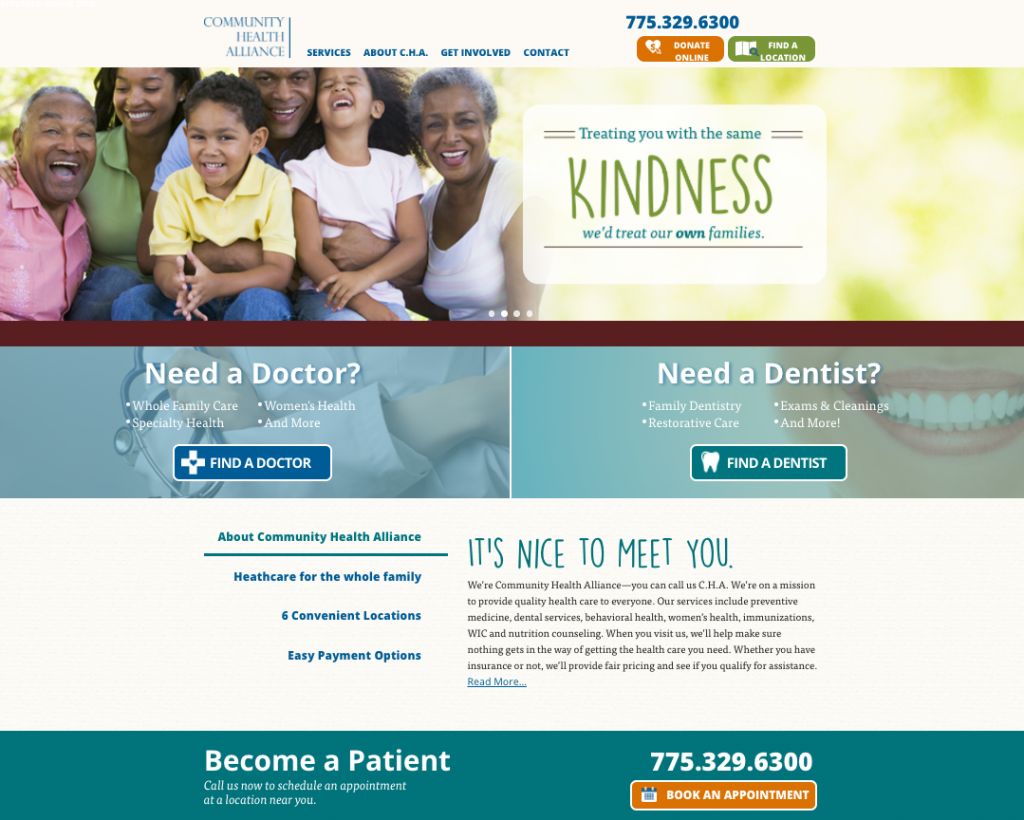How To Bridge The Gap Between SEO And Usability To Satisfy Your Human Customers
SEO and usability are on the same team, but it takes serious skills to integrate them and create a seamlessly optimized, user-friendly website.
Yes, SEO is crucial for the success of your website, but don’t let the fact that you’re trying to rank on the first page of Google impact the language you use to talk to your actual human customers. People, even non-SEO experts, can tell when too many keywords are plopped into your website copy and don’t create a great usability experience.
SEO 101
Most of us have a general understanding of SEO. Search engine optimization (SEO) is the strategy of writing content that drives organic traffic to your site from search engines. When you Google something, those first-page results are sites that have good SEO that’s optimized for your searched keywords.
In general, search engines have a good grasp on what searchers are looking for. Search engines are easy to use, they scour the hundreds of thousands of sites for overall worthwhileness, and they provide the most relevant content on the web (in order of relevance).
Currently, search engines like Google are getting even smarter when it comes to searching. With the increase of voice searches occurring on devices like Alexa, Siri, and Google Assistant, searches don’t have to be as specific as they once did. Google has made it easier for users to find the answer they’re looking for without asking the exact answer that was once needed to find the right results.
Don’t Forget About the Humans
Despite how effectively search engines do their job, they simply can’t experience content the way humans do. They scan over words, images, and videos for relevance, but they don’t laugh at clever infographics or share your recent post to social media. Search engines review data of human engagement and produce assumptions to increase your understanding of what people want. Ultimately, they are relying on you to read between the lines, to contextualize, and dig deeper. Facts are facts, but the reasons behind them could be as variant as the individuals visiting your site.
So how does all this information help you improve your user’s experience?
While search engines aren’t human, their analysis of keywords, links, and site layout leads to useful intuitions about the relevance and credibility of your site.
As a site creator, investing time in creating thoughtful, engaging content improves the chances of SEO and usability that results in user satisfaction. It’s all about increasing the visibility of your website among search engine results.
Something that is oftentimes forgotten when it comes to SEO is that site creators are too keyword-focused. Remember that links, backlinks, and high-quality, detailed content all play a role in SEO as well.
In fact, lengthier content actually ranks higher for SEO than shorter content. Content that is 3,000+ words skyrockets the number of shares compared to content that is less than 3,000 words. The goal is for every visitor to leave your site feeling like they’ve gained something–whether that happens through inbound links, sharable content, or incentives for return visits.
How To Know If Your Website Is Killing It
Engagement is everything, and engagement metrics assist in the never-ending game of growing and maintaining site visits.
Engagement comes in many shapes and sizes: clicks, shares, time spent on a given page, and spending time popping around the site are the most common forms of engagement. The goal is for engagement to turn to action. If you notice people are taking action after reading your blog or after they’re on a specific site page, then those pages of your site are doing their job. Go website!
But if you find that website visitors are falling off on certain pages or you’re conversion rate is far below what you want it to be, your site could be to blame. Find out what pages need some help and optimize them with keywords, credible, detailed content, and CTAs.
If you’re getting the sales you want, then that’s probably a good indication of a successful website, but where can you find the numbers to prove it?
There are numerous website analytic tools that will give you loads of information. Here are a few free tools to get your analytic search started:
Google Analytics
Google Analytics can provide you with tons of data that helps you measure your site’s SEO success. This SEO tool reports things like your top landing pages for search traffic, keywords that drive people to your site, the specific search engines that are driving people to your site, and your top drop-off pages.
PageSpeed Insights
PageSpeed is a free Google tool that can tell you how fast or slow your site is moving. A slow site could be caused by the way it was built, the size of files you have uploaded, or the speed of the internet visitors are using. Slow sites lead to lower conversion rates—use PageSpeed to optimize.
Screaming Frog SEO
Screaming Frog is helpful in providing insight on site errors. If your website has dead ends and broken links, it will contribute to suffering SEO and usability. This tool analyzes your website for these issues so you’re aware of the problems and are able to fix them.
Design
Brand specialists haven’t agreed on a “one right way” to design a website, but there are a few non-negotiables you won’t want to miss.
First off, as a business owner, you have to know how to communicate with your web designer from the get-go so your site is just the way you want it. And based on your communication, wants, and needs, a website designer can give recommendations on what is best for SEO and usability.
If you’re aiming to feature one product or service, a simpler design is best. You don’t ever want to overwhelm your website visitors with too many pages, copy, and all-over-the-place design if you’re featuring a single product.
If you have a bundle of products or services to highlight, dynamic design is your friend. Dynamic design is a bit more of a complex site (but again, not too overwhelming for site visitors). These types of sites display various types of content and change often. Keeping people up-to-date is pretty cool, huh? Best get a rockstar designer to get this job done.
Also, people are intimidated by huge blocks of text. People don’t like reading too many words (for the post part). They’re more interested in looking, so make your site what they want to see. Don’t scare them off with too many words. Although copy, explanations, and descriptions are important for getting your point across, it’s best to break up text with images, banners, or other visual content.

See: simple, clean, friendly, and beautiful.
Spin Straw Into Golden Content
Creating thoughtful, branded content is key to keeping all of your visitors engaged. If someone comes to your site and scratches their head because of the confusion they feel about who you actually are, uh oh. Be consistent with your voice, your tone, your everything.
Start out with knowing how to target your audience. Know your consumers, understand what they love, and give them more of it. The truth is, your brand is not for everyone. But the more you know about your audience, the better you will become at communicating with them and delivering content that meets their needs.
Like we said before, be graceful with your keywords and don’t overload your website copy with obvious keyword after keyword. It’s fine (and very important for SEO and usability) to incorporate optimized keywords for your site, but be conscious of how you use them.
You should also be mindful of the people who skim your site quickly. Many people probably won’t read every single word that you write on your website—it’s just the nature of the human game. People don’t want to read everything, they want to find what they’re looking for and move on. Give the skimmers what they came for by breaking up your content into smaller blocks of text and use headings that are detailed and specific to the copy below.
And remember, the internet is a digital universe. If you want to increase your influence, you need to produce original content consistently. The first rule of engaging content is to have a singular intent: what do you want the reader to gain from their visit? You can find more rules on this here.
Panda Approved
The Panda update, introduced by Google in 2011, was created to replace human evaluators (yes, you read that right, humans used to evaluate the quality of websites until 2011). Through machine learning, the quality control algorithm was able to mimic human preferences. Check out this video to learn how to optimize your site based on Panda’s preferences.
Now that we’re no longer in the dinosaur ages of human internet evaluators (poor pre-2011 Google employees), Google is constantly figuring out ways to change its algorithm—finding link spam, finding local SEO spam, changing the entire algorithm behind its ranking system. Most currently, Google changed the weight and the importance of many previous SEO ranking factors (a real hinder for SEO pros). And the best part is, Google doesn’t tell us the specifics behind their changes. But unfortunately, it’s just the name of the game when it comes to improving technology.
The Website Geniuses
Ultimately, you want your reader to take something away from your site, whether that’s an answer to their question, shareable content, or just a positive impression.
And the best way to do this is by increasing your SEO and usability with killer website copy, eye-catching design, and great content that converts. It’s all about the people, the ones who are visiting your site and hopefully converting their visits into sales for your brand.
It’s OK if you’re not an SEO expert, a website designer, or a copywriter. There are website geniuses out there to help you get the best possible branded website. In fact, we have a few of those people for you. Buy Us A Beer and let’s discuss how we can optimize your site’s SEO and usability.


Recent Comments